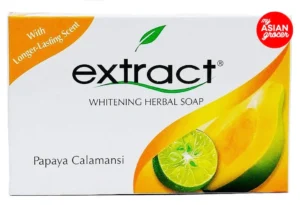Extract soap is a natural and organic soap that contains various plant extracts, such as aloe vera, lavender, chamomile, and rosemary. Extract soap is popular for its soothing, moisturizing, and anti-inflammatory properties. It can help improve the skin’s health and appearance, as well as reduce stress and anxiety.
However, due to the high demand and popularity of extract soap, there are many counterfeit products in the market that claim to be original extract soap. These fake products are made with cheap and harmful ingredients, such as artificial colors, fragrances, preservatives, and chemicals. Fake extract soap can cause skin irritation, allergies, infections, and even cancer.
Therefore, it is important to know how to identify fake extract soap from original extract soap. In this blog post, we will share some tips and methods to help you distinguish between the two. By following these tips, you can avoid buying fake extract soap and enjoy the benefits of original extract soap.
How to Identify Fake Extract Soap
Packaging
One of the easiest ways to identify fake extract soap is to look at the packaging. Original extract soap has a simple and elegant packaging, with a clear and readable label that shows the brand name, ingredients, expiry date, and barcode. The packaging is also eco-friendly and biodegradable, as original extract soap is committed to environmental sustainability.
Fake extract soap, on the other hand, has a flashy and colorful packaging, with a vague and misleading label that does not show the brand name, ingredients, expiry date, or barcode. The packaging is also made of plastic or other non-recyclable materials, as fake extract soap does not care about the environment.
Here are some images that show the difference between the original and fake extract soap packaging:
Ingredients
Another way on how to identify fake extract soap is to check the ingredients. Original extract soap contains only natural and organic ingredients, such as plant extracts, essential oils, glycerin, and sodium hydroxide. These ingredients are gentle and effective on the skin, and they have various benefits, such as:
Plant extracts: They provide vitamins, minerals, antioxidants, and phytochemicals that nourish, protect, and heal the skin. They also have different aromas that relax and uplift the mood.
Essential oils: They have antibacterial, antifungal, and antiviral properties that prevent and treat skin infections. They also have therapeutic effects that calm and soothe the nerves.
Glycerin: It is a humectant that attracts and retains moisture in the skin, keeping it hydrated and soft.
Sodium hydroxide: It is a base that reacts with the oils and fats to form soap. It is also known as lye or caustic soda, and it is essential for soap making.
Fake extract soap, on the other hand, contains artificial and harmful ingredients, such as synthetic colors, fragrances, preservatives, and chemicals. These ingredients are harsh and damaging on the skin, and they have various risks, such as:
Synthetic colors: They are derived from coal tar, petroleum, or other sources that can cause skin irritation, inflammation, and sensitivity. They can also contain heavy metals, such as lead, mercury, and arsenic, that can accumulate in the body and cause toxicity and cancer.
Synthetic fragrances: They are composed of hundreds of chemicals that can trigger allergic reactions, headaches, nausea, and asthma. They can also disrupt the hormonal balance and affect the reproductive system.
Preservatives: They are added to extend the shelf life of the soap, but they can also cause skin dryness, itching, and rashes. Some of the common preservatives are parabens, formaldehyde, and phthalates, which are linked to endocrine disruption, infertility, and cancer.
Chemicals: They are used to enhance the appearance, texture, and performance of the soap, but they can also strip the natural oils and moisture from the skin, leaving it dry, dull, and prone to infections. Some of the common chemicals are sulfates, triclosan, and ethanolamine, which are associated with skin irritation, inflammation, and carcinogenicity.
Price
A third way on how to identify fake extract soap is to compare the price. Original extract soap is more expensive than fake extract soap, because it uses high-quality and organic ingredients that are sourced from ethical and sustainable farms. Original extract soap also follows a traditional and artisanal process of soap making, which requires more time and skill. Original extract soap is worth the price, because it offers more value and quality for the skin and health.
Fake extract soap is cheaper than original extract soap, because it uses low-quality and synthetic ingredients that are mass-produced in factories. Fake extract soap also follows a modern and industrial process of soap making, which requires less time and effort. Fake extract soap is not worth the price, because it offers less value and quality for the skin and health.
Therefore, you should be wary of buying extract soap that is too cheap or discounted, as it is likely to be fake. You should also avoid buying extract soap from unknown or unreliable sellers, such as street vendors, online platforms, or unlicensed shops, as they may sell fake extract soap. You should only buy extract soap from reputable and authorized sellers, such as official websites, certified stores, or trusted distributors, as they guarantee original extract soap.
Here are some ways to find the best deals on original extract soap from reputable sellers:
[Way 1: Subscribe to newsletters or social media accounts of original extract soap brands]
[Way 2: Look for coupons or vouchers from original extract soap brands or sellers]
[Way 3: Buy in bulk or bundles from original extract soap brands or sellers]
See also: Roushun Vitamin C serum
Difference Between Foreign and Nigeria Extract Soap
The difference between foreign and Nigeria extract soap is mainly in the price, packaging, and ingredients. Foreign extract soap is more expensive than Nigeria extract soap, because it uses higher quality and organic ingredients. Foreign extract soap also has a simpler and more elegant packaging, with a clear and readable label.
Nigeria extract soap, on the other hand, is cheaper than foreign extract soap, because it uses lower quality and synthetic ingredients. Nigeria extract soap also has a more colorful and flashy packaging, with an Arabic figure written on the carton. However, this does not mean that Nigeria extract soap is fake, as it still contains the same papaya calamansi scent as the foreign extract soap. It is just a matter of preference and budget.
Extract Soap Reviews
A fourth way to identify fake extract soap is to check the reviews and ratings of the extract soap before buying. Reviews and ratings can give you an idea of the quality and performance of the extract soap, as well as the feedback and experience of other customers. However, not all reviews and ratings are reliable and helpful, as some of them may be fake or biased.
Fake or biased reviews and ratings are those that are written by the sellers themselves, their affiliates, or their competitors, to either promote or discredit the extract soap. Fake or biased reviews and ratings are usually easy to spot, as they have some of these characteristics:
They are either too positive or too negative, without giving any reasons or details.
They are either too vague or too specific, without giving any evidence or examples.
They are either too short or too long, without giving any balance or structure.
They are either too similar or too different, without giving any diversity or consistency.
They are either too old or too new, without giving any relevance or currency.
Genuine and helpful reviews and ratings are those that are written by real and satisfied customers, who have used and tested the extract soap. Genuine and helpful reviews and ratings are usually hard to find, as they have some of these characteristics:
They are balanced and objective, giving both the pros and cons of the extract soap.
They are clear and informative, giving the facts and features of the extract soap.
They are relevant and credible, giving the context and background of the extract soap.
They are diverse and consistent, giving the opinions and perspectives of different customers.
They are current and updated, giving the latest and most accurate information about the extract soap.
Conclusion
In conclusion, we have shared some tips and methods on how to identify fake extract soap from original extract soap. By following these tips, you can avoid buying fake extract soap and enjoy the benefits of original extract soap.


